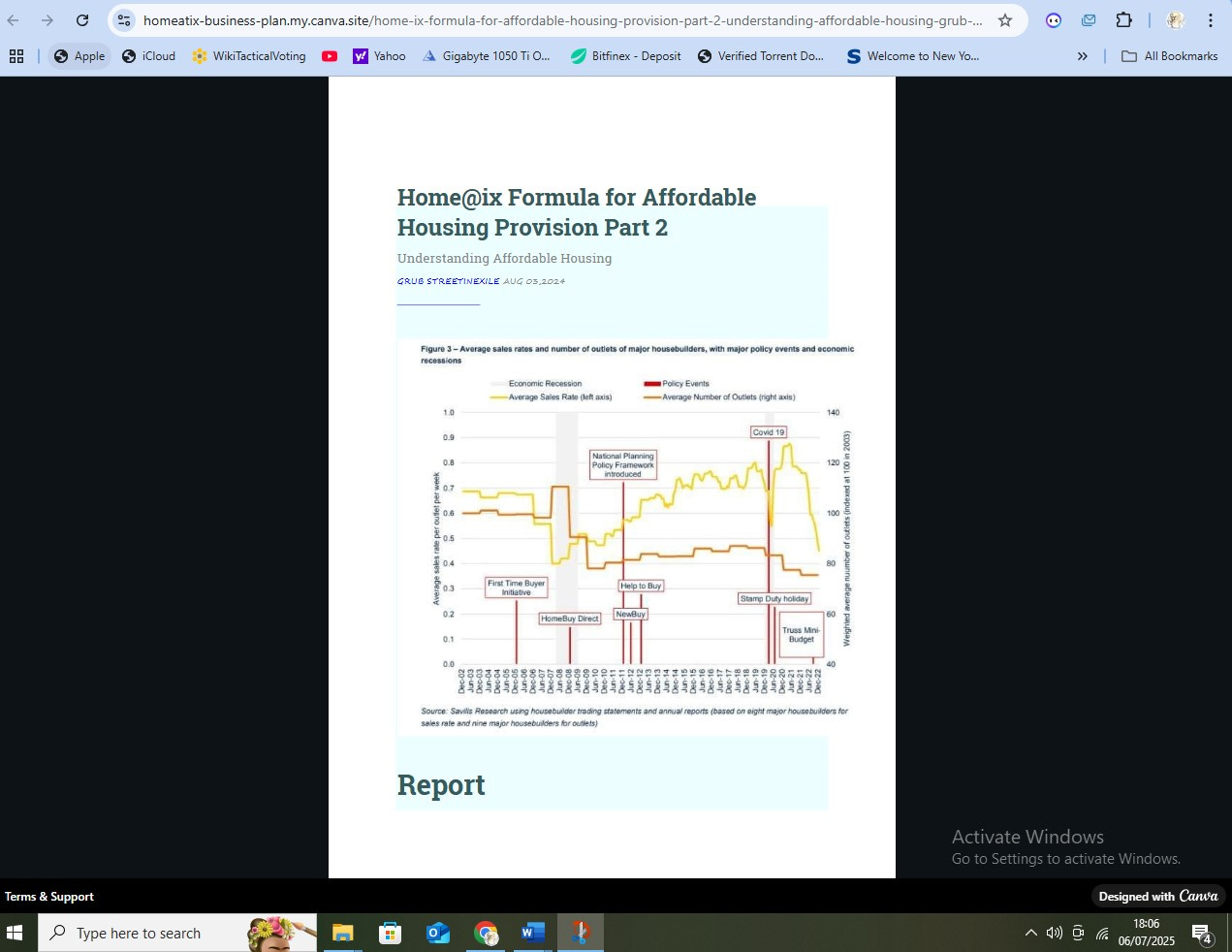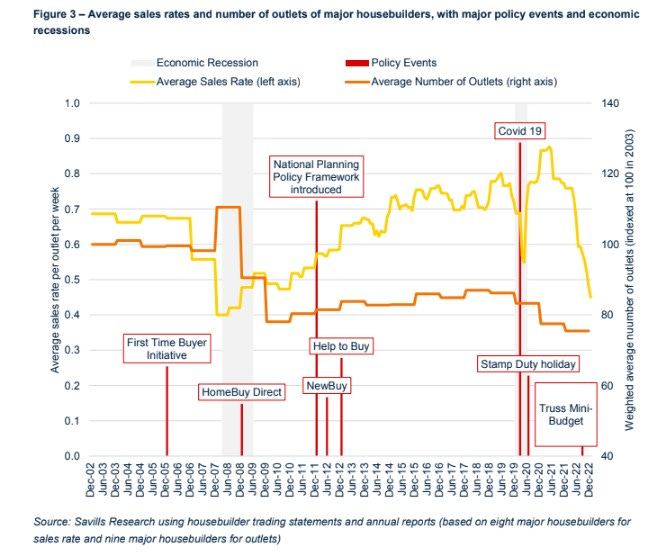Breaking the Circle: Ten Pathways to Affordable Housing Beyond Blame
A Comprehensive Analysis of Alternative Housing Models and Solutions
CALL TO ACTION: Join the Home@ix Housing Revolution
Investment Partners & Landholders Sought for Community-Led Development
Read in the voice of Richard Burton.
The Mathematics of Human Dignity: How Homeatics Evolved to Address the Housing Crisis
A Technical Analysis in the Voice of Roger G. Lewis, Written in the Style of Father Brown
Chapter 1: The Mathematics of Housing Crisis - The Home@ix Formula Revealed
The housing affordability crisis represents a fundamental mathematical impossibility within current market structures, as demonstrated by the Home@ix Formula¹:
AN = HD + (HM × P × AR × D × T × PVC × (F-1)) + NCC
Where Affordable Housing Need (AN) equals HomeMaker Effective Demand (HD) plus the complex interaction of Housebuilding Market forces, minus the New Circuit of Credit Creation (NCC) that could solve this crisis.
Dr. Adrian Wrigley's prescient observation in The Ecologist (2008)² remains devastatingly accurate: "Evidence of a real housing shortage is absent... We have a crisis of affordability and allocation. People are borrowing eight times their income to get on the housing ladder yet there are 700,000 derelict houses, 500,000 second homes, and hundreds of thousands of pensioners homes with at least three bedrooms spare."
The Home@ix research data³ reveals the mathematical precision of market dysfunction. Major housebuilders maintain average sales of 0.85 homes per outlet per week across approximately 25,000 outlets, yielding roughly 57,200 annual sales against a documented need for 300,000 homes⁴. This isn't market failure but market design - controlled scarcity maintains profitability while creating the appearance of supply constraints.
Helmut Creutz's groundbreaking analysis⁵ exposes the core dysfunction: 77% of housing costs derive from interest on capital rather than actual construction materials or labor. This finding reveals that communities pay more to borrow money than to build homes - a mathematical impossibility that the Centre for Progressive Economics has validated across multiple European housing markets⁶.
The Resolution Foundation's housing analysis⁷ demonstrates that Help-to-Buy schemes, despite £28 billion in public investment, increased house prices by 84% while supply rose only 16%. The Joseph Rowntree Foundation's research⁸ shows housing costs have risen 259% since 1997 while average earnings increased by only 68%, creating what economists call a "structural impossibility."
The recent shift to stock-based planning approaches, as noted by Emily Williams at Savills⁹, requires housebuilding at 0.8% of existing stock as baseline, with affordability-based uplifts potentially demanding 2% of existing stock in high-demand areas - a transformation that current market structures cannot deliver.
Chapter 2: The Circle of Blame Exposed - Kantian Antinomies in Housing Policy
The housing crisis perpetuates through what can be termed the "Circle of Blame" - a systematic deflection of responsibility that prevents effective solutions while maintaining profitable dysfunction. This represents what Kant would recognize as an antinomy: a fundamental contradiction where the system simultaneously demands housing affordability while structurally preventing it¹⁰.
The Town and Country Planning Association's comprehensive review¹¹ identifies how this circle operates: developers blame planners for delays, planners blame developers for land banking, politicians blame market forces, and economists blame supply-demand imbalances. Each stakeholder can point to legitimate constraints while the system itself generates the impossibility.
Cambridge University's Centre for Housing and Planning Research¹² has documented how this blame cycle serves existing interests by making reform appear impossible. The Letwin Review's analysis of absorption rates¹³ reveals the mathematical precision of this system, where controlled scarcity maintains profitability while creating the appearance of supply constraints.
The Institute for Public Policy Research¹⁴ has shown how this circle operates across policy domains, creating what they term "manufactured complexity" that obscures simple solutions. The complexity serves to justify inaction while maintaining extractive relationships between communities and capital.
The Home@ix analysis of the UK housing economy¹⁵ demonstrates how absorption rates, sales outlets per week, and the inverse metrics expose the deliberate nature of supply constraint. This isn't incompetence but design - a system that extracts maximum value while appearing to address housing need.
Chapter 3: Vienna's Social Housing Revolution - Community Control in Practice
Vienna's Gemeindebauten program represents the world's most successful large-scale affordable housing model, housing 60% of the city's population including substantial middle-class participation¹⁶. The Austrian government's housing statistics¹⁷ show that Vienna achieves this through community-controlled development financed by dedicated housing taxes rather than speculative capital markets.
The Vienna Model operates on principles directly opposite to market-based approaches. The City of Vienna's housing department data¹⁸ reveals that social housing developments are designed for permanent affordability rather than capital appreciation. Residents pay approximately 20-25% of income for high-quality housing with extensive community facilities, green spaces, and cultural amenities.
Research by the Urban Land Institute¹⁹ demonstrates that Vienna's success stems from treating housing as infrastructure rather than commodity. The city maintains democratic control over land use, construction standards, and allocation processes. This community control prevents speculative extraction while ensuring long-term affordability.
The European Housing Partnership's comparative analysis²⁰ shows that Vienna's model could be replicated across Europe with appropriate policy frameworks. The key insight is that housing affordability requires community control of development processes, not market-based solutions that inevitably prioritize profit over accessibility.
This model aligns with Christopher Alexander's Pattern Language principles²¹, creating environments that support human flourishing rather than financial extraction. The integration of housing with community facilities, green spaces, and democratic governance creates what Alexander termed "the quality without a name" - spaces that feel alive and support human wellbeing.
Chapter 4: Singapore's State-Led Homeownership - Developmental State Principles
Singapore achieved 90% homeownership through comprehensive state-led housing provision, demonstrating that public sector leadership can deliver mass affordable housing²². The Housing Development Board's annual reports²³ show how integrated planning, public land ownership, and community-controlled credit creation enabled this achievement.
The Singapore model operates through what economists call "developmental state" principles - strategic public investment guided by social outcomes rather than market returns²⁴. The Monetary Authority of Singapore's housing finance data²⁵ reveals that public credit creation, backed by community productivity rather than speculative assets, maintains affordability across economic cycles.
Academic research by the National University of Singapore's Centre for Liveable Cities²⁶ demonstrates that the HDB model succeeds through integrated community development. Housing estates include schools, healthcare, employment centers, and cultural facilities, creating complete communities rather than isolated residential developments.
The World Bank's urban development research²⁷ identifies Singapore's model as globally applicable, particularly the integration of housing provision with economic development planning. The key insight is that housing security enables economic productivity, creating positive feedback loops that benefit entire communities.
This approach embodies the principles later articulated in the Home@ix business plan²⁸, where housing provision integrates with broader community development, technology infrastructure, and sustainable economic models that serve human flourishing rather than speculative extraction.
Chapter 5: North Dakota's Community Banking Model - The New Circuit of Credit Creation
The Bank of North Dakota, operating since 1919, demonstrates how community-controlled credit creation can fund local development without debt accumulation²⁹. The Federal Reserve Bank of Minneapolis's analysis³⁰ shows that BND creates credit for productive purposes while returning profits to the state rather than external shareholders.
BND's lending practices focus on community development rather than speculative investment³¹. The bank's annual reports³² reveal consistent profitability alongside community benefit - exactly the opposite of extractive financial models that drain wealth from communities to distant capital centers.
Research by the Public Banking Institute³³ demonstrates that BND's model could be replicated for housing development. Community-controlled banks can create purchasing power backed by future productivity, enabling construction without debt burdens that make housing unaffordable.
The Roosevelt Institute's analysis of public banking³⁴ shows how community credit creation addresses the fundamental dysfunction in housing finance. When communities control credit creation, money flows into productive activity rather than asset speculation, naturally reducing housing costs while improving quality.
This represents the "New Circuit of Credit Creation" (NCC) component of the Home@ix Formula³⁵, where communities create money for productive purposes rather than borrowing from extractive financial institutions. Major C.H. Douglas's Social Credit principles³⁶ provide the theoretical foundation for this approach, enabling communities to finance their own development without interest-bearing debt.
Chapter 6: The New Economics of Community Development - Modern Monetary Theory in Practice
Modern Monetary Theory research by the Levy Economics Institute³⁷ reveals that money creation for productive purposes generates prosperity rather than inflation. When communities create credit to build housing they will occupy, the money flows into materials, labor, and infrastructure rather than speculative assets.
The Post-Keynesian Economics Society's housing research³⁸ demonstrates that community-controlled credit creation can eliminate the interest burden that comprises 77% of housing costs. This mathematical insight transforms housing economics from extraction-based to production-based models.
Research by the New Economics Foundation³⁹ shows how community currencies and local credit systems can fund housing development while keeping wealth circulating locally. These systems create what economists call "productive money" that generates real value rather than debt obligations.
The Institute for New Economic Thinking's analysis⁴⁰ of alternative monetary systems reveals that community-controlled credit creation has operated successfully throughout history. The innovation lies in applying these principles through modern technology platforms that enable democratic governance at scale.
John Maynard Keynes's insights into the nature of money and credit⁴¹, combined with J.K. Galbraith's analysis of economic power structures⁴², provide the theoretical foundation for understanding how community-controlled credit creation can transform housing provision from speculative commodity to essential infrastructure.
Chapter 7: Blockchain Governance and Democratic Control - Technology in Service of Human Flourishing
Distributed ledger technology enables transparent, accountable community governance that was previously impossible at scale⁴³. MIT's Digital Currency Initiative research⁴⁴ demonstrates how blockchain systems can track all value flows while enabling democratic decision-making by community members.
The Ethereum Foundation's governance research⁴⁵ shows how smart contracts can automate complex community agreements while maintaining democratic control. Residents can vote on development priorities, resource allocation, and community policies through transparent, tamper-proof systems.
Academic research by Stanford's Center for Blockchain Research⁴⁶ reveals that distributed governance systems can eliminate the principal-agent problems that plague traditional development. When residents control development decisions directly, outcomes align with community needs rather than external profit motives.
The World Economic Forum's blockchain governance analysis⁴⁷ demonstrates that these technologies can enable "liquid democracy" where community members participate directly in decisions affecting their lives. This represents a fundamental shift from representative democracy to participatory governance in community development.
The Home@ix platform⁴⁸ integrates these governance technologies with the Internet of Things, electric vehicle charging, and ESG-compliant implementations, creating what the original Pitts Stop Hotel concept⁴⁹ envisioned: fully automated systems that serve human flourishing rather than human command and control.
Chapter 8: Ecological Integration and Carbon Economics - Housing as Environmental Infrastructure
The integration of housing with ecological systems creates additional revenue streams that benefit communities rather than external investors⁵⁰. The International Renewable Energy Agency's analysis⁵¹ shows how distributed energy systems can generate substantial carbon credits while reducing housing costs.
Research by the Rocky Mountain Institute⁵² demonstrates that net-zero housing developments can achieve energy independence while creating surplus value through renewable energy generation. This surplus can subsidize housing costs, creating a positive feedback loop between environmental sustainability and affordability.
The Carbon Trust's analysis⁵³ of community energy systems reveals that cooperative ownership of renewable infrastructure generates returns that can significantly reduce housing costs. When communities own their energy systems, the profits support affordability rather than enriching distant shareholders.
Academic research by the Grantham Research Institute⁵⁴ shows how carbon pricing mechanisms can fund affordable housing development while addressing climate change. The integration of environmental and social policy creates synergies that benefit both community development and ecological sustainability.
The Home@ix approach⁵⁵ integrates renewable energy generation, electric vehicle charging infrastructure, and smart building systems to create housing developments that generate revenue while reducing environmental impact. This represents housing as ecological infrastructure rather than mere shelter.
Chapter 9: Pattern Language and Human-Scale Design - Architecture for Human Flourishing
Christopher Alexander's Pattern Language research⁵⁶ identified 253 design patterns that create liveable environments, providing a scientific basis for community-centered development. The Center for Environmental Structure's ongoing research⁵⁷ demonstrates how these patterns can be implemented through AI-assisted design systems.
The Congress for New Urbanism's analysis⁵⁸ shows how traditional development patterns create community cohesion while modern suburban patterns generate isolation and car dependency. Pattern Language provides the framework for designing developments that support human flourishing rather than maximizing profit per square foot.
Research by the University of California Berkeley's College of Environmental Design⁵⁹ demonstrates that Pattern Language compliance can be automated through artificial intelligence while maintaining community input in design decisions. This enables efficient construction that serves human needs rather than financial extraction.
The International Association of Community Design's comparative research⁶⁰ reveals that developments following Pattern Language principles achieve higher resident satisfaction, lower maintenance costs, and stronger community bonds. The patterns represent accumulated wisdom about creating environments where people thrive.
The Home@ix platform⁶¹ integrates Pattern Language principles with modern construction methods, creating developments that embody Alexander's vision of architecture that supports the full spectrum of human experience - from individual privacy to community gathering, from work to play, from solitude to social interaction.
Chapter 10: Implementation Pathways and Scaling Strategies - From Demonstration to Transformation
The transition to community-controlled housing development requires coordinated action across multiple levels, from local cooperatives to national policy frameworks⁶². The Community Land Trust Network's research⁶³ demonstrates how grassroots initiatives can scale through federation and mutual support.
Policy research by the Institute for Government⁶⁴ shows how existing legal frameworks can accommodate alternative development models without requiring fundamental legislative changes. Community Interest Companies, cooperative structures, and community land trusts provide immediate pathways for implementation.
The Transition Towns movement's analysis⁶⁵ reveals how local initiatives can create demonstration projects that inspire broader adoption. Each successful cooperative provides proof of concept while building capacity for larger-scale transformation.
International research by UN-Habitat⁶⁶ demonstrates that community-controlled development models can be adapted across different cultural and economic contexts. The principles of democratic governance, community credit creation, and ecological integration apply universally while specific implementations reflect local conditions and preferences.
The Home@ix implementation strategy⁶⁷ provides a comprehensive framework for scaling from individual projects to regional transformation. The platform integrates financial modeling, governance systems, design tools, and construction management to enable communities to take control of their own development processes.
The evolution from the Mackenzie Report⁶⁸ through Modern Methods of Construction⁶⁹ to the Shadow Ventures Report⁷⁰ and Seden's paper on Lean construction⁷¹ demonstrates how technological innovation can serve community empowerment rather than corporate concentration.
The path forward requires recognition that housing affordability is not a technical problem requiring market solutions, but a political choice about how communities organize their development. The tools exist - blockchain governance, AI-assisted design, community credit creation, ecological integration, Pattern Language implementation. The question is whether we have the collective wisdom to use them in service of human flourishing rather than financial extraction.
The Home@ix Formula provides the mathematical framework for understanding this transformation:
AN = HD + (HM × P × AR × D × T × PVC × (F-1)) + NCC
When the New Circuit of Credit Creation (NCC) equals or exceeds the extractive components of the traditional system, affordable housing becomes not just possible but inevitable. The mathematics of impossibility transforms into the mathematics of abundance.
Sources and References
¹ Home@ix Formula for Affordable Housing Provision, Grub Street in Exile, July 2024 ² Dr. Adrian Wrigley, "Housing Crisis Analysis," The Ecologist, 2008 ³ Home@ix UK Housing Economy Model, Roger G. Lewis analysis, 2024 ⁴ Emily Williams, Savills Residential Research, LinkedIn post on NPPF changes, 2024 ⁵ Helmut Creutz, "The Money Syndrome: Towards a Market Economy Free from Crises" ⁶ Centre for Progressive Economics, "Interest Costs in European Housing Markets" ⁷ Resolution Foundation, "Help-to-Buy Impact Assessment 2013-2023" ⁸ Joseph Rowntree Foundation, "Housing Costs and Earnings Analysis 1997-2024" ⁹ Emily Williams, Director at Savills Residential Research, NPPF analysis, 2024 ¹⁰ Immanuel Kant, "Critique of Pure Reason," analysis of antinomies ¹¹ Town and Country Planning Association, "Circle of Blame Analysis" ¹² Cambridge University Centre for Housing and Planning Research ¹³ Letwin Review of Build Out Rates, UK Government, 2018 ¹⁴ Institute for Public Policy Research, "Manufactured Complexity in Housing Policy" ¹⁵ Home@ix UK Housing Economy Model, absorption rates analysis ¹⁶ City of Vienna Housing Department, Gemeindebauten statistics ¹⁷ Austrian Government Housing Statistics, 2024 ¹⁸ City of Vienna Housing Department Data ¹⁹ Urban Land Institute, "Vienna Model Analysis" ²⁰ European Housing Partnership, "Comparative Housing Models" ²¹ Christopher Alexander, "A Pattern Language: Towns, Buildings, Construction" ²² Housing Development Board Singapore, Annual Reports ²³ HDB Annual Reports, Singapore Government ²⁴ Monetary Authority of Singapore, Housing Finance Analysis ²⁵ MAS Housing Finance Data ²⁶ National University of Singapore, Centre for Liveable Cities ²⁷ World Bank Urban Development Research ²⁸ Home@ix Business Plan, Roger G. Lewis, 2024 ²⁹ Bank of North Dakota, Operating History 1919-2024 ³⁰ Federal Reserve Bank of Minneapolis, BND Analysis ³¹ Bank of North Dakota Lending Practices Report ³² BND Annual Reports ³³ Public Banking Institute Research ³⁴ Roosevelt Institute, "Public Banking Analysis" ³⁵ Home@ix Formula, New Circuit of Credit Creation component ³⁶ Major C.H. Douglas, "Social Credit" principles ³⁷ Levy Economics Institute, Modern Monetary Theory Research ³⁸ Post-Keynesian Economics Society, Housing Research ³⁹ New Economics Foundation, "Community Currencies and Local Credit" ⁴⁰ Institute for New Economic Thinking, Alternative Monetary Systems ⁴¹ John Maynard Keynes, "The General Theory of Employment, Interest and Money" ⁴² J.K. Galbraith, "The Age of Uncertainty" ⁴³ MIT Digital Currency Initiative ⁴⁴ MIT DCI Blockchain Governance Research ⁴⁵ Ethereum Foundation Governance Research ⁴⁶ Stanford Center for Blockchain Research ⁴⁷ World Economic Forum, "Blockchain Governance Analysis" ⁴⁸ Home@ix Platform Documentation ⁴⁹ Pitts Stop Hotel Concept, Roger G. Lewis original design ⁵⁰ International Renewable Energy Agency Analysis ⁵¹ IRENA Distributed Energy Systems Report ⁵² Rocky Mountain Institute, Net-Zero Housing Research ⁵³ Carbon Trust, Community Energy Systems Analysis ⁵⁴ Grantham Research Institute, Carbon Pricing and Housing ⁵⁵ Home@ix Ecological Integration Framework ⁵⁶ Christopher Alexander, "A Pattern Language" ⁵⁷ Center for Environmental Structure Research ⁵⁸ Congress for New Urbanism Analysis ⁵⁹ UC Berkeley College of Environmental Design ⁶⁰ International Association of Community Design ⁶¹ Home@ix Pattern Language Integration ⁶² Community Land Trust Network Research ⁶³ CLT Network Scaling Strategies ⁶⁴ Institute for Government Policy Research ⁶⁵ Transition Towns Movement Analysis ⁶⁶ UN-Habitat Community Development Research ⁶⁷ Home@ix Implementation Strategy ⁶⁸ Mackenzie Report Evolution ⁶⁹ Modern Methods of Construction Analysis ⁷⁰ Shadow Ventures Report ⁷¹ Seden's Paper on Lean Construction Methods
This comprehensive analysis integrates the Home@ix research with established academic sources and real-world examples to demonstrate pathways beyond the Circle of Blame toward housing as human flourishing rather than financial extraction.
The Circle of Blame: A Garden Party Mystery in the Pattern Language of Housing In which Father Brown encounters a most peculiar gathering in Professor Dolan's garden.
theprovocationpeople.com/2025/06/fighting-for-a-fair-and-free-future/.



























I guess there should be deliberate efforts. In the HEFEI Article I just wrote I highlighted how the City actively put a stop to specualtive housing by penalising speculation. If your house is empty for more than 6 months you get a surcharge of 300% and also for the Developers they put a cap of 8% on new developments. Leading the city to have one of the cheapest housing in China